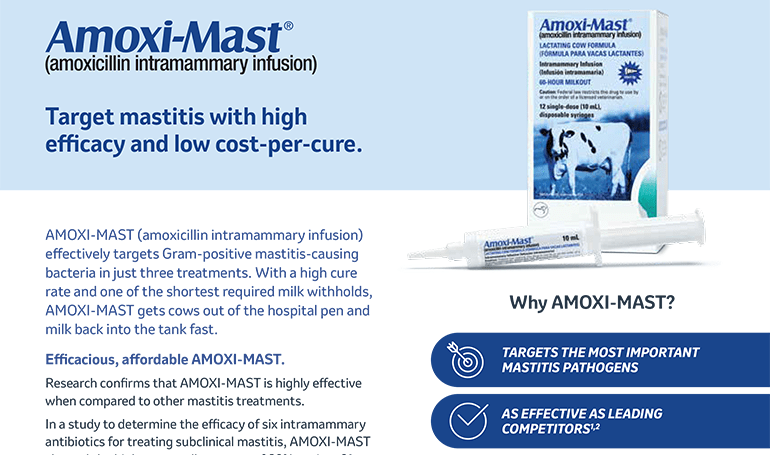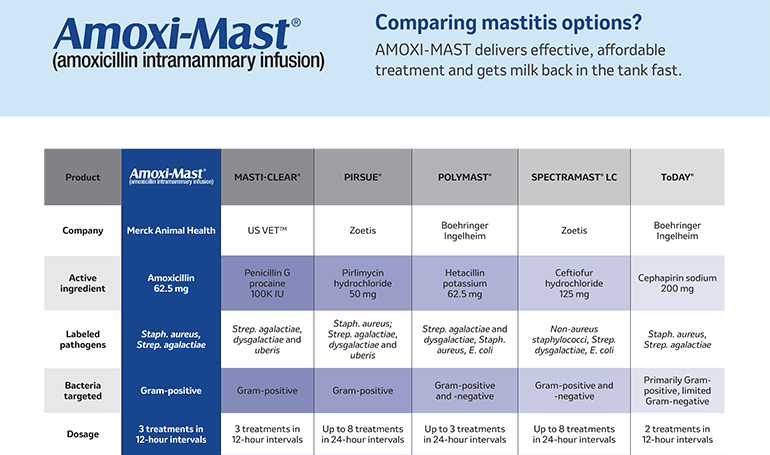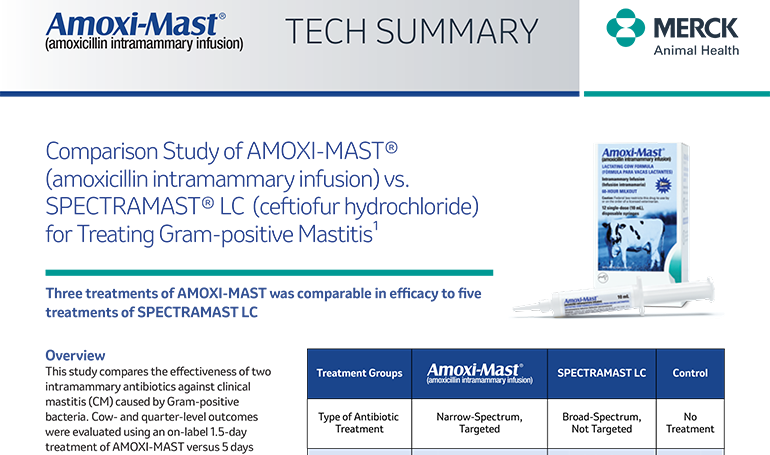

Cut mastitis losses with effective, affordable AMOXI-MAST.
Now delivering the lowest cost-per-cure.
Get the results you expect from mastitis treatment.
A single case of mastitis can cost up to $444 per cow, with indirect costs extending into future lactations.2 To reduce production losses, treatment needs to achieve a bacteriological cure and get milk back in the tank fast. AMOXI-MAST delivers that and more.
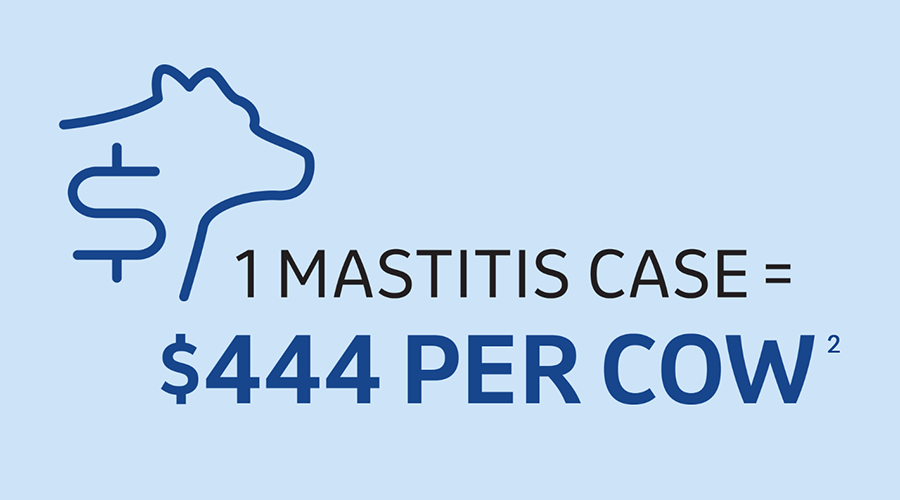
The targeted, short-duration treatment.
At Freeport Veterinary Service, dairy practitioners find AMOXI-MAST is a valued tool to treat mastitis caused by Gram-positive bacteria and get cows back in the milking string faster.
Why Amoxi-Mast?

EFFECTIVE
Cure rates above 80%.1,3

AFFORDABLE
Lowest cost-per-cure among competitors.

TARGETED
Effectively treats Gram-positive bacteria.

FAST
Only four days out of the tank.
Why targeted treatment matters.
Three separate studies show that Gram-positive mastitis represents 35% to 42% of all clinical cases.3,4,5 Antibiotic therapy has the highest success rate against Gram-positive bacteria.1,3 Gram-negative infections, which account for 25% to 30% of cases4, are much less responsive to treatment.
That’s why narrow-spectrum AMOXI-MAST is an ideal choice for targeted therapy against the most important mastitis-causing pathogens.
In research comparing leading intramammary antibiotics for treating subclinical mastitis, AMOXI-MAST showed the highest overall cure rate of 82% against 21 mastitis pathogens.1 Another study found AMOXI-MAST was just as effective as SPECTRAMAST® LC in treating clinical mastitis caused by Gram-positive bacteria.3
What’s more, AMOXI-MAST also supports responsible antibiotic use by using the minimum level of antibiotic treatment required to cure mastitis.
Get cows back in the milking string fast.
AMOXI-MAST features a simple, three-treatment regimen over 1.5 days and a short 60-hour milk withhold. Using AMOXI-MAST reduces mastitis losses by getting cows out of the hospital pen and producing saleable milk in as few days as possible.
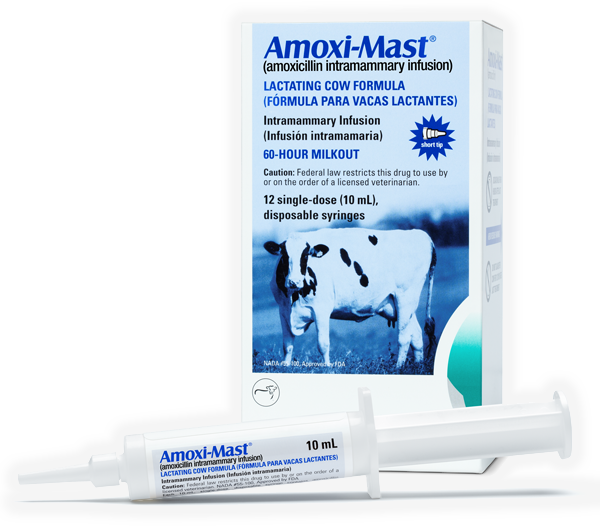
The true cost of mastitis treatment.
When you consider all factors – cure rate, time out of the tank and product price – AMOXI-MAST offers the lowest cost-per-cure among leading intramammary treatments.
Compare Cost-Per-Cure for Leading Mastitis Treatments
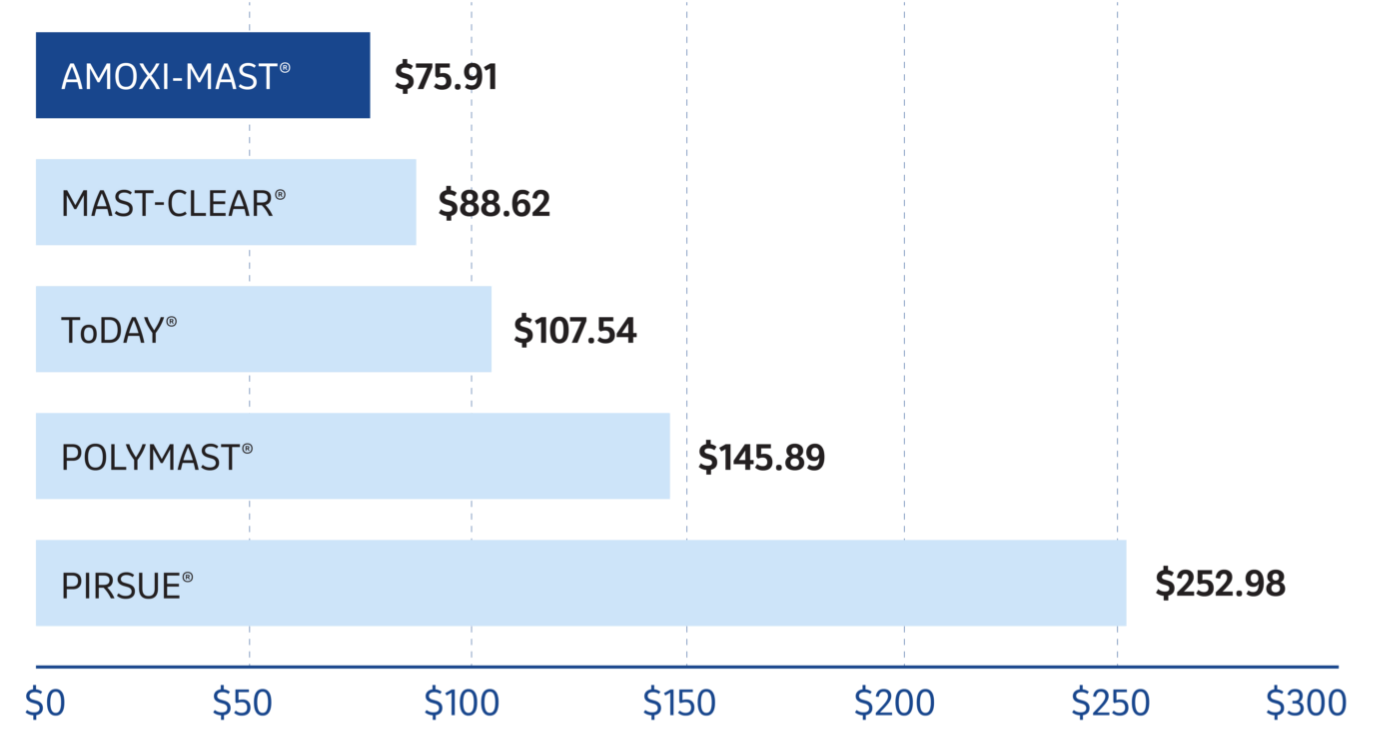
Mastitis Treatment Cost-Per-Cure1
(Based on bacteriological cure with absence of bacteria in milk samples.)
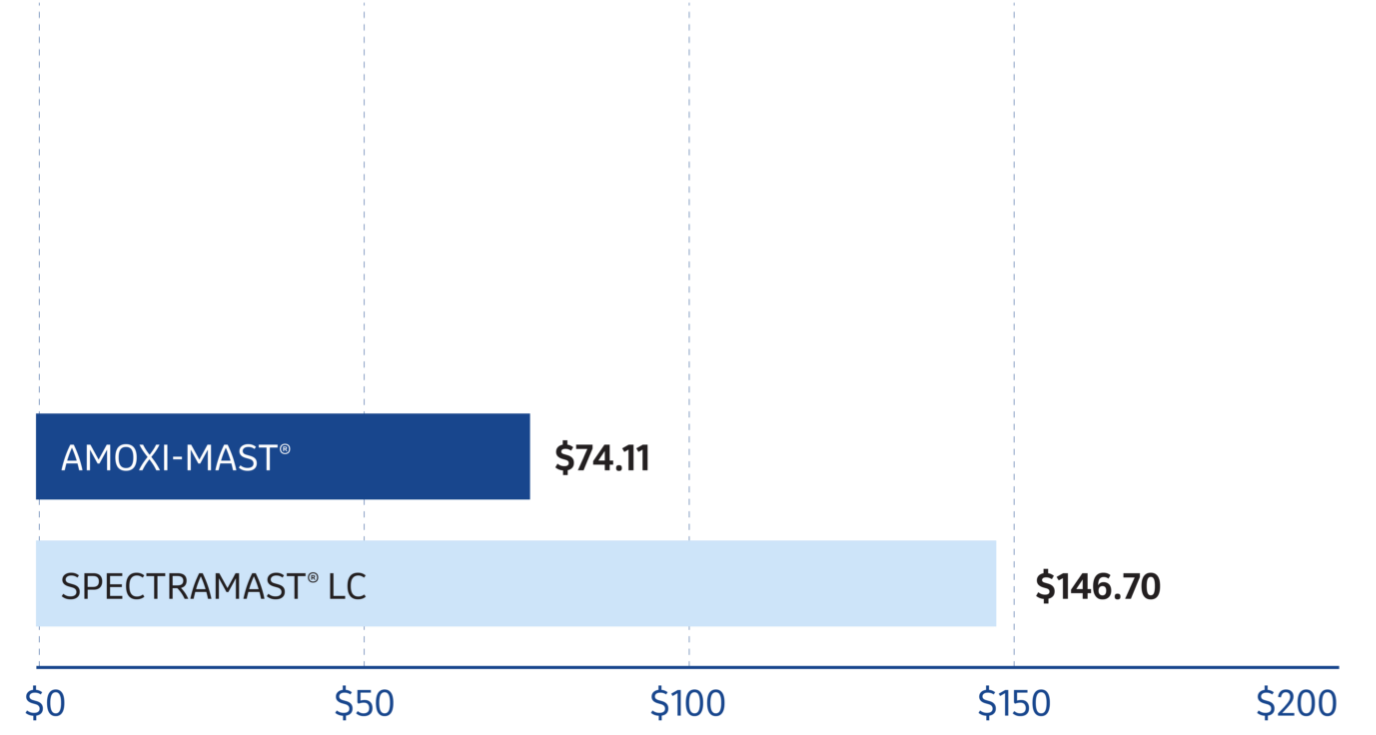
Mastitis Treatment Cost-Per-Cure3
(Based on clinical cure with absence of clinical signs.)
Total cost-per-cure calculated by dividing the treatment cost and milk loss by cure rate. Cure rates based on published research studies.1,3
Treatment costs based on on-label number of treatments multiplied by price per tube. Product price based on 12-tube box price from PBSAnimalHealth.com.
Value of milk loss calculated by multiplying the days out of the tank, 75 pounds of milk per cow per day and $17.50 milk price per hundredweight.
Costs for PIRSUE and SPECTRAMAST LC calculated assuming five treatments.
Product Information
AMOXI-MAST®
(amoxicillin intramammary infusion)
Product Description
Amoxi-Mast is a stable, nonirritating suspension of amoxicillin trihydrate containing the equivalent of 62.5 mg of amoxicillin per disposable syringe. Amoxi-Mast is manufactured by a nonsterilizing process.
Amoxicillin trihydrate is a semisynthetic penicillin derived from the penicillin nucleus, 6-amino-penicillanic acid. Chemically, it is D(-)-α-amino-p-hydroxybenzyl penicillin trihydrate.
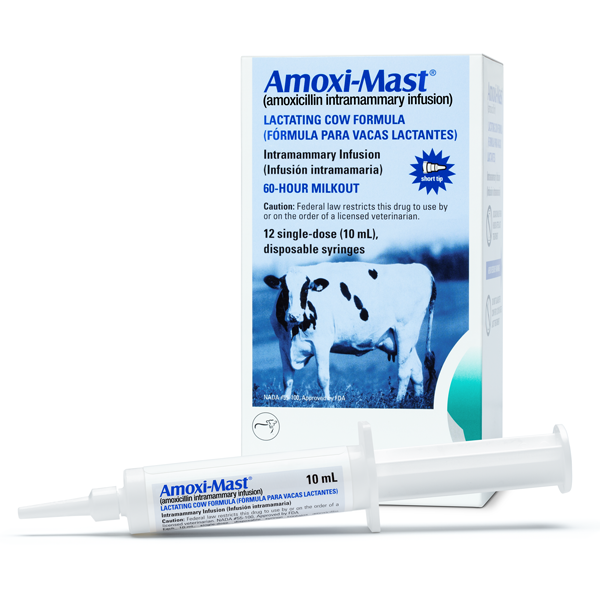

Key Benefits
- Effectively treats Gram-positive bacteria.
- Lowest cost-per-cure among competitors.
- Only four days out of the milk tank.
Dosage & Usage
- Amoxi-Mast is indicated in the treatment of subclinical infectious bovine mastitis in lactating cows due to Streptococcus agalactiae and penicillin-sensitive Staphylococcus aureus. Early detection and treatment of mastitis is advised.
- Used by inserting the tip of the syringe into the teat orifice and massaging the medication up into the milk cistern.
- Supplied in cartons of 12 single-dose syringes with 12 alcohol swabs.
- Each 10-mL, disposable syringe contains amoxicillin trihydrate equivalent to 62.5 mg of amoxicillin activity.
- Milk taken from animals during treatment and for 60 hours (5 milkings) after the last treatment must not be used for food. Treated animals must not be slaughtered for food purposes within 12 days after the last treatment.
Resources
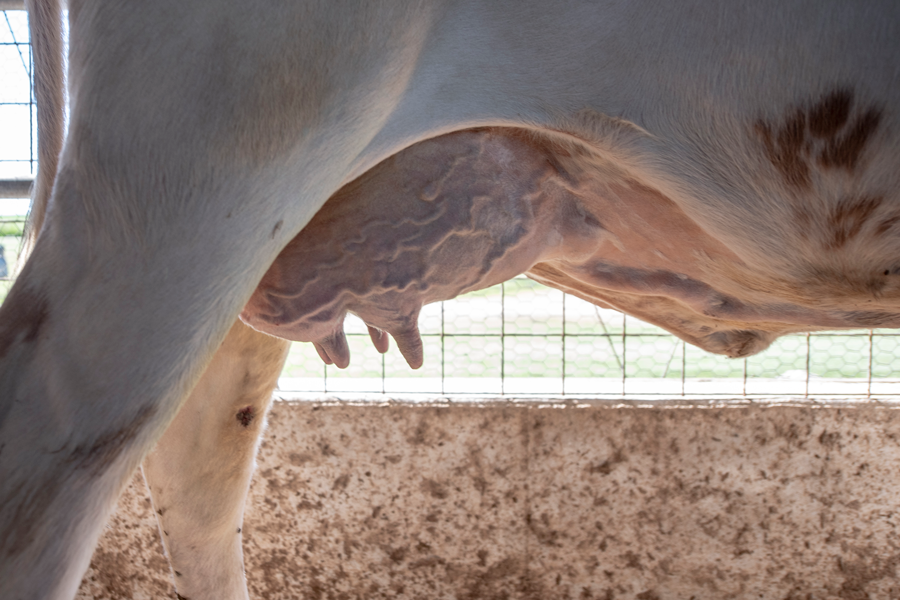
Prevent productivity losses from mastitis with the complete portfolio of udder health products from Merck Animal Health.
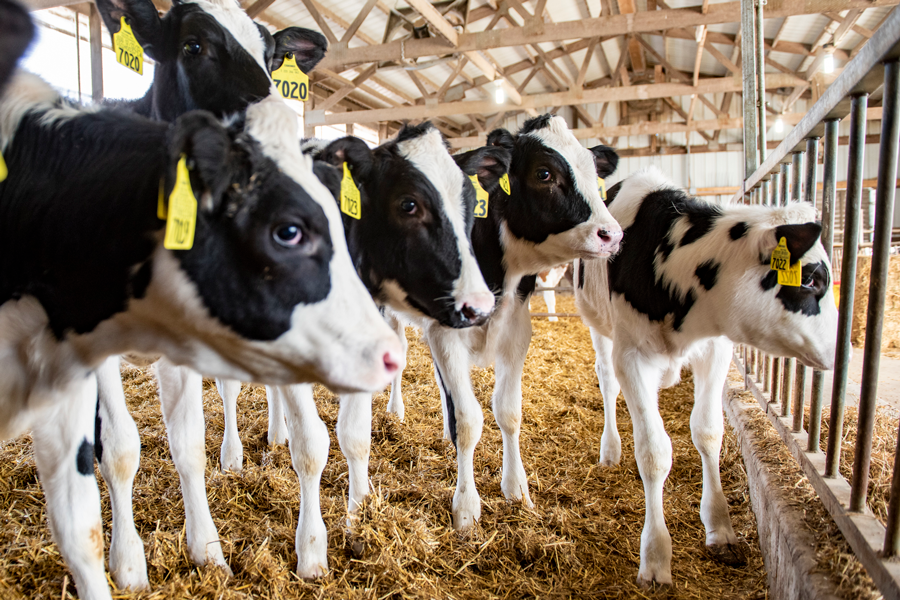
Stay in front of profit robbing diseases with the comprehensive vaccine lineup from Merck Animal Health.
Sign up to receive cattle health management insights, industry news and more sent straight to your inbox.
Important Safety Information
AMOXI-MAST: Milk taken from animals during treatment and for 60 hours (2.5 days) after the last treatment must not be used for food. Treated animals must not be slaughtered for food purposes within 12 days after the last treatment. For complete information, refer to the product label.
Contact
U.S. only: Merck Animal Health livestocktechsrvc@merck-animal-health.com or call 1-800-211-3573
For more information regarding efficacy and safety data, go to productdata.aphis.usda.gov
For additional information, please see the product label.
References
1. Wilson DJ, et al. Comparison of seven antibiotic treatments with no treatment for bacteriological efficacy against bovine mastitis pathogens. J Dairy Sci. 1999;82:1664-1670.
2. Rollin E, et al. The cost of clinical mastitis in the first 30 days of lactation: An economic modeling tool. Prev Vet Med. 2015;122(3):257-264.
3. Tomazi T, et al. Negatively controlled, randomized clinical trial comparing different antimicrobial interventions for treatment of clinical mastitis caused by Gram-positive pathogens. J Dairy Sci. 2021;104(3):3364-3385.
4. Ruegg PL. Making antibiotic treatment decisions for clinical mastitis. Vet Clin Food Anim Pract. 2018;34(3):413-425.
5. Oliveira L, et al. Characterization of clinical mastitis occurring in cows on 50 large dairy herds in Wisconsin. J Dairy Sci. 2013;96:7538-7549.

